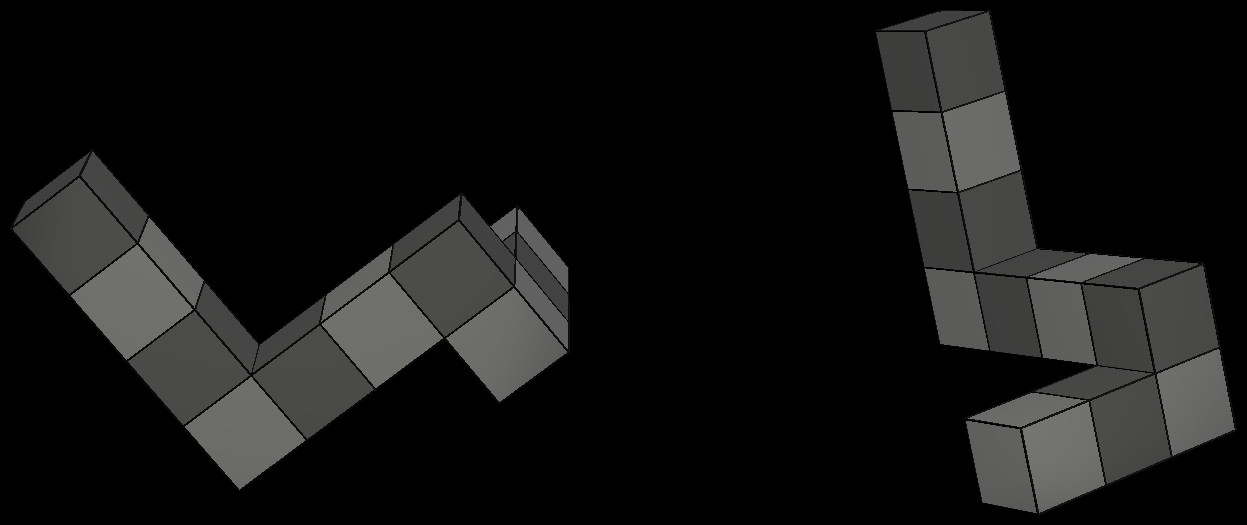The Mental Rotation Task
This page last updated 2020/08/31
Description
This Mental Rotation Task is a classic Shepard and Metzler -style mental rotation task, with pairs simple objects made from 10 cubes rotated by varying degrees about any of the three canonical axes. In approximately half of the 80 trials presented to the participant in the default implementation, one of the objects in the pair will be a mirror-flipped, and likely rotated, version of the companion object. Participants are tasked with identifying matches (i.e., non-mirror-flipped pairs) versus mirror-flipped pairs. This task is a commonly-used measure of an individual's ability to perform mental manipulations of figural-scale spatial information.
In-task instructions
In this task, you will see pairs of objects that are either the exact same object, or mirrored versions of each other. Objects in each pair may be rotated relative to each other, your task is to mentally rotate the objects and determine if they are a match or not.
You can indicate your responses by pressing '1' on your keyboard to indicate if the objects are the same, or '2' to indicate they are different.
In the example below, the two objects are mirror images of each other, and you would press '2' to respond correctly.

The sample stimulus presented in the in-task instructions for the Mental Rotation Task.
Stimuli
The objects in each stimulus have cubes shaded in alternating dark and light gray, and viewed with a perspective-based (i.e., non-isometric) camera. There are a total of 10 unique objects employed in the Mental Rotation Task, and one object in the pair is either pitched, yawed, or rolled at a magnitude between -120° and 120°, in 20° increments, from one of five starting orientations. Stimuli are presented in short 'blocks' of four stimuli each, in which the left object in the pair stays the same for all for stimuli in that block, and the object on the right changes for each trial. This was done to speed up reaction times for this task, because at it's default implementation it's the longest interactive task of those available at gettinglost.ca.
Trial structure
Each 'block' of four trials consists of the following:
- 500ms of blank screen.
- Left object fades in over 250ms.
- Inter-trial interval between 500ms and 1000ms.
- Right object and query appears instantaneously.
- Response options remain until a response is provided.
- When the participant responds, the right object disappears
- Repeat steps 3-6 three times.
- Left object fades out over 250ms.
Parametrization
The current version features a single researcher-defineable parameter: the number of trials in a run, which should be a multiple of four.
Change log
2020/08/19: Improved reporting to trim null data and added AppType variable to distinguish WebGL from Standalone. 2020/08/10: Changed random inter-trial interval range from 750-1250ms to 500-1000ms. Added task parameter 'X Trials', removed AA for webGL compatability. 2017/06/15: V1.02. Included numpad-key detection & anti-accidental button pressing. 2017/05/30: V1.01. Made objects slightly smaller, fixed instruction fade bug.
